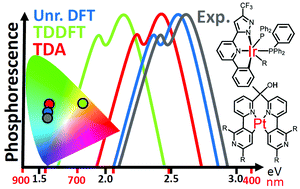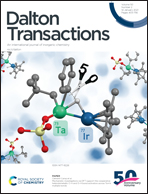DFT vs. TDDFT vs. TDA to simulate phosphorescence spectra of Pt- and Ir-based complexes†
Abstract
This paper presents a thorough quantum investigation of the optical properties of twelve transition metal complexes using state of the art (TD)DFT computations. The studied molecules are two Pt-based and ten Ir-based complexes. Geometrical parameters, absorption and emission spectra are directly compared to available experimental data. Phosphorescence spectra have been computed within the Adiabatic Hessian (AH) method which takes into account mode mixing and a proper description of both ground and excited states potential energy surfaces (frequency calculations). For each compound, three methods have been considered to obtain the relaxed triplet excited state supposedly involved in the phosphorescence process, i.e. unrestricted DFT, TDDFT and its Tamm–Dancoff approximation (TDA). In overall, unrestricted DFT and TDA overperform TDDFT for the investigated complexes especially when an Ir centre is present. The AH model demonstrates its good capability to reproduce accurately phosphorescence spectra. Finally, simulation and experimental data are represented over a CIE chromaticity horseshoe.



 Please wait while we load your content...
Please wait while we load your content...